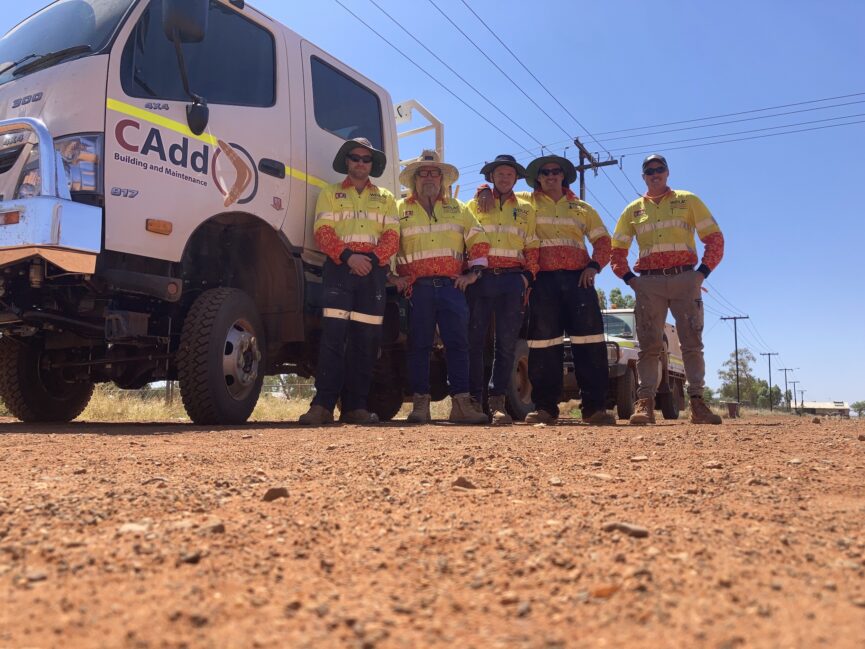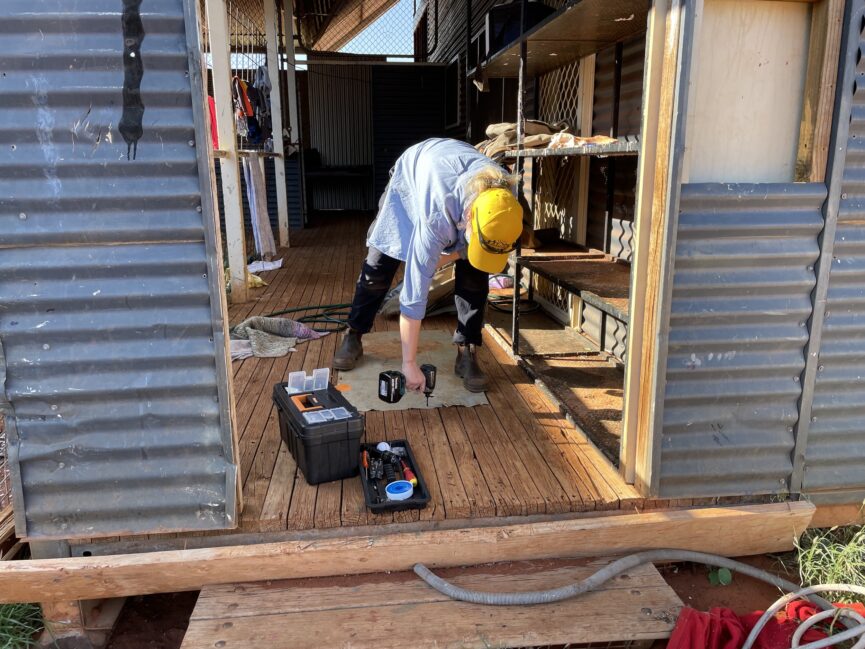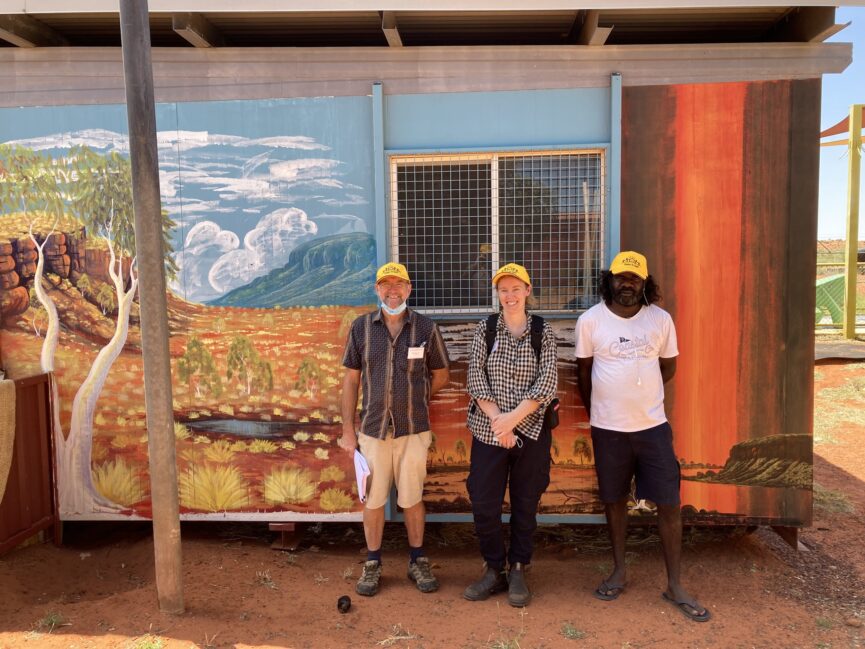
Ngurra Palyamaniny
Homes in the remote Martu communities of Punmu, Kunawarritji and Parnngurr are not in a good state. They have been poorly maintained and after years of neglect, fluctuating occupancy and harsh environmental conditions many are barely habitable. The communities had not been provided with consistent funding for housing maintenance and repairs for many years.
Jamukurnu Yapalikurnu Aboriginal Corporation (JYAC) is the Martu trustee corporation for Martu native title rights. JYAC jumped at the opportunity to apply for a grant through the WA Government’s Social Housing Economic Recovery Package (SHERP) that would enable urgent repair of properties across the three Martu communities.
The project is a stage in a long-term community revitalisation movement driven by Martu that had started long before the grant was announced; JYAC had completed preliminary surveys of the homes and knew what needed to happen to bring them up to standard. This data proved invaluable for the application.

Our travelling kit includes washers, taps, door handles and other small items, allowing us to make immediate repairs to each house.
What did we do?
Our role as Project Manager included writing the grant application; developing the scope of work documentation, coordinating the repair and maintenance team; managing the budgets, ensuring that work was completed on schedule and to standard; creating clear social media posts to notify community members of project timelines; and eventually, acquitting the grant. The depth of this role was possible because of our trusted and enduring relationship with JYAC.
In developing the grant, we collaborated with two trusted partners – HealthHabitat and CAdd Building and Maintenance Group.
HealthHabitat is an Australian NFP that, since 1987, has worked with local communities to improve the health of people living in poverty through better housing. Their work focuses on making immediate and coordinated improvements to existing housing, rather than going through the time-consuming and hugely costly process of rebuilding. Their Housing for Health ‘survey/fix’ program underpinned the methodology for this project:
- First, it provided a proven methodology for improving housing function fast!
- The team from TFA/HealthHabitat was able to arrive in the community, equipped with a toolkit that included washers, taps, door handles and other small items.
- We trained and paid local people to join the Survey team to survey the houses whilst delivering straightforward maintenance and repair on the spot.
- Refurbishment projects often drag on. This project felt pacy because the teams were coming through twice – first, to do the simple repairs and order materials and second, to do major work.
CAdd Building and Maintenance Group is an Aboriginal-owned construction company with experience working with JYAC and TFA in the Western Desert. They understood the environment and had worked previously in each community under previous contracts with JYAC.
Each house was prioritised according to the Healthy Living Principles developed by Healthhabitat and outlined in the National Indigenous Housing Guide (2007):
Tier 1 – Safety: urgent work is required to address the immediate safety of tenants
Tier 2 – Health: works required to ensure housing is healthy for habitation, for instance, washing, cooking, cleaning, and pest treatment.
Tier 3 – Security: works required to secure the house.
The project was complex and required collaboration and understanding between numerous parties. It was important that people were fairly treated and that each community received equal attention.
What was the impact?
We know through numerous longitudinal studies that ensuring repairs and home improvements focus on health hardware function significantly impacts the health of the people who live there.
HealthHabitat’s Housing for Health program was founded on the principles outlined in the ‘Uwankara Palyanku Kanyintjaku’ report (Anangu for ‘a plan to stop people getting sick’) published in 1987. The purpose of this project was to do just that.
Community participation, employment, training and environmental health knowledge were key. Projects such as these work most effectively when the community on the ground is engaged, and local people understand and support how the program is to work. Having JYAC as the project owner ensured all works were Indigenous-led, with accountability directly to the Martu Board of Directors and to community leaders.





